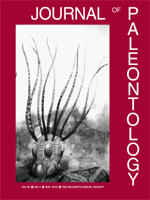Environmental variability exerts a substantial control on massive, free-living, colonial corals such as Manicina areolata, influencing their shape and size as well as other characters, such as base morphology and colline complexity in meandroid forms. This species is well adapted for life in shallow, wave-swept waters due to its self-righting capabilities. Two different ecophenotypes of M. areolata, as defined by overall shape and base morphology, are present in two approximately coeval Pleistocene localities (PBA Quarry and Holey Land Canal) in southern Florida. These differences reflect adaptation to two depositional settings. Corallum size, shape, and oral complexity allow clear differentiation between these two environments. Greater corallum size, as primarily manifested by significantly greater height, tends to accompany increased grain size. The basal area and weight per cm2 of the coralla appear to be primary limiting factors in M. areolata's growth by controlling the coral's ability to self-right after overturning or causing sinking into less cohesive substrates. Complexity of confluent corallites increases with increasing size and colony volume. Thus, complexity of valley and colline patterns on the oral surface increases as a function of base area, so that collines developed on smaller, soft-substrate-inhabiting colonies are characteristically less complex than are those of larger, higher colonies. These complexities and variation in shape are apparently related to environmental conditions, predominantly substrate, water depth, and physical energy, resulting in recognizable ecophenotypes.
How to translate text using browser tools
1 May 2010
Morphologic Variation in Manicina areolata (Cnidaria, Scleractinia) from the Pleistocene of South Florida
James E. Sorauf,
Peter J. Harries
ACCESS THE FULL ARTICLE

Journal of Paleontology
Vol. 84 • No. 3
May 2010
Vol. 84 • No. 3
May 2010
Bermont
Cnidaria
Manicina
morphology
Pleistocene




